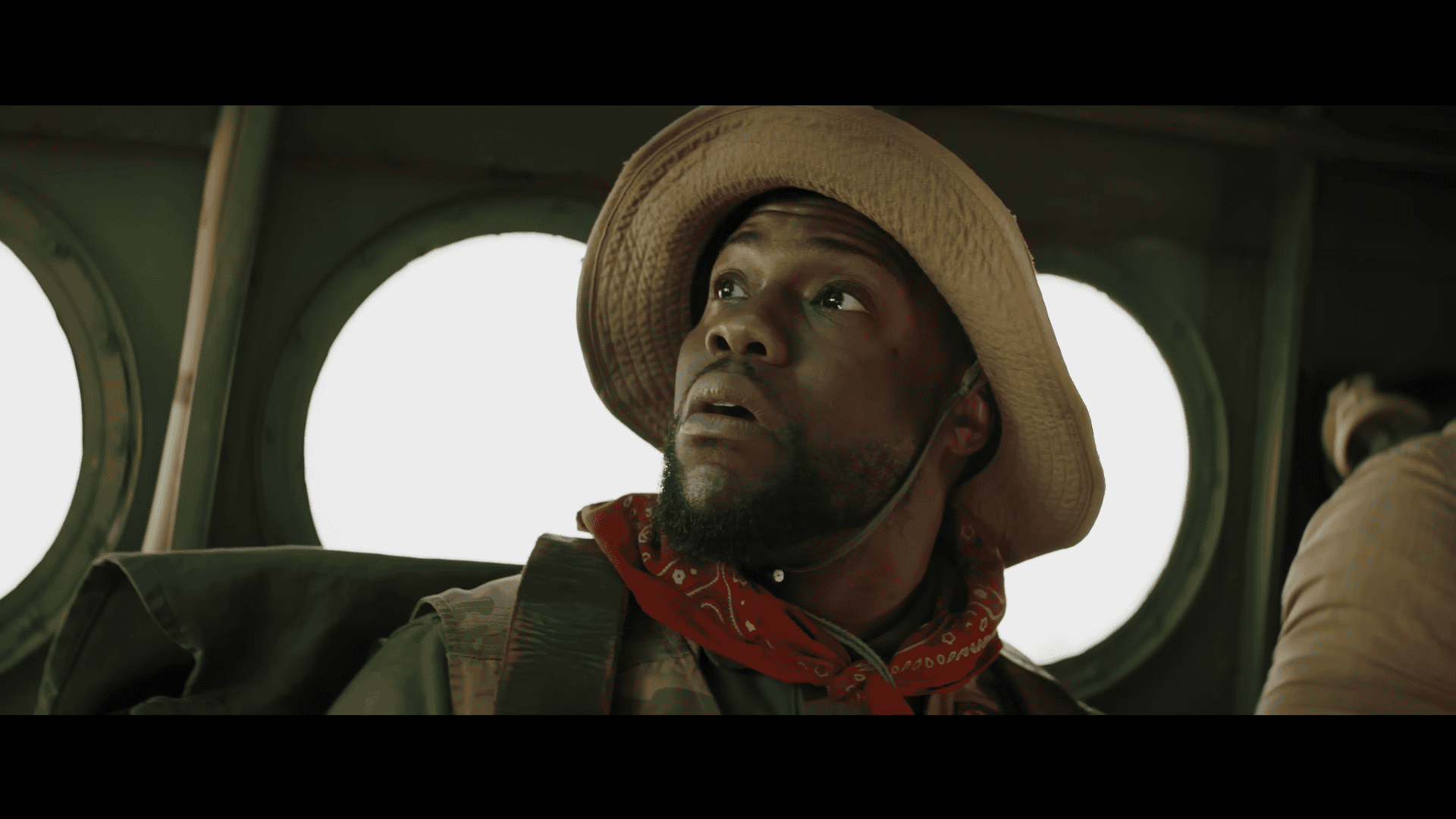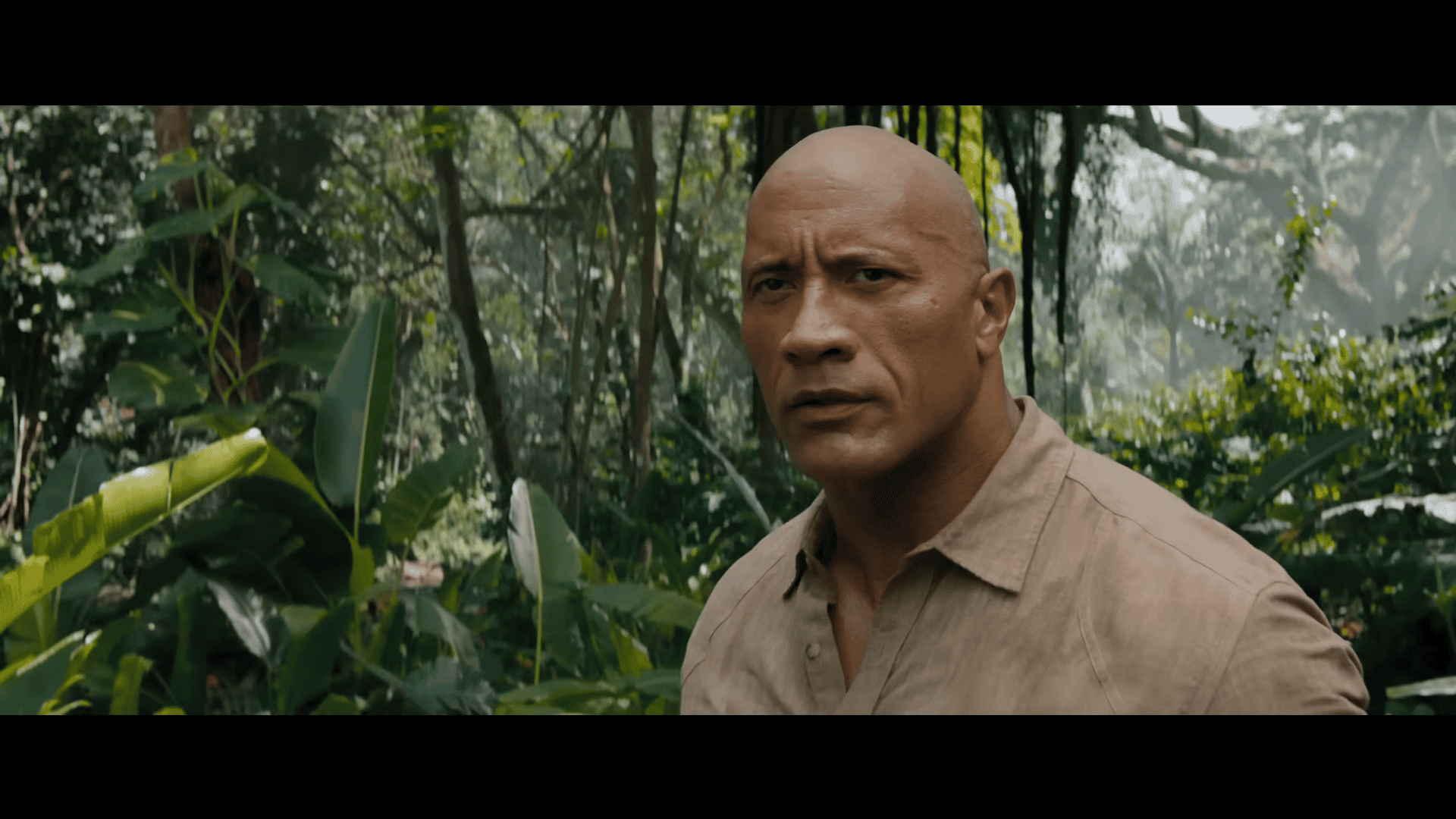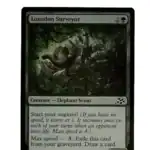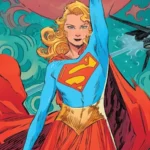The jungle drums are beating once more—Jumanji 3, the highly anticipated sequel to Jumanji: The Next Level, is officially scheduled to hit theaters on December 11, 2026. Confirmed by Sony Pictures during CinemaCon 2025, the film marks the third installment in the modern Jumanji franchise and the fifth overall in the Jumanji cinematic universe.
A Familiar Team Reunites
Returning to direct is Jake Kasdan, who helmed both Jumanji: Welcome to the Jungle (2017) and Jumanji: The Next Level (2019), both of which revitalized the dormant franchise with a unique twist: players being sucked into a video game world. These two films combined earned nearly $1.8 billion globally, cementing the reboot series as a commercial powerhouse.
All four core stars—Dwayne “The Rock” Johnson, Kevin Hart, Jack Black, and Karen Gillan—are expected to return, reprising their in-game avatars. Producer Hiram Garcia confirmed that the creative team has “locked in the pitch” and that development was waiting for the stars’ schedules to align, especially after Johnson and Garcia wrapped work on the holiday action film Red One.
Where the Franchise Stands

This next chapter is being framed as a possible conclusion to the current Jumanji story arc, bringing full circle the narrative that began in 2017. While the first reboot film introduced the concept of avatars and game mechanics in a jungle setting, the second took things further with altered character dynamics, new environments like deserts and mountains, and even surprise body swaps.
Given the way The Next Level ended—with the video game world bleeding into the real one—it’s expected that the new film will escalate that premise even further. While plot specifics remain under wraps, early clues suggest a fusion of the real and game worlds, potentially turning the characters’ hometown into a chaotic game map.
Title, Plot & Production: What’s Still Unknown
Despite the confirmed release date, the film is still untitled. Internally, it’s being referred to as the “Jumanji: The Next Level sequel,” but Sony has yet to unveil an official title or storyline. Likewise, production has not yet started, and filming locations haven’t been confirmed—though past entries were shot in Hawaii, Atlanta, and Canada.
Expect production updates to roll out in early-to-mid 2026, especially once the cast’s schedules are fully locked in.
Behind the Scenes and Fan Reaction
The fan base has remained vocal during the franchise’s multi-year hiatus. While Jack Black stirred mild concern when he commented in 2024 about stepping away from big franchises, industry insiders clarified he was speaking about potential future sequels beyond this upcoming entry.
Online speculation remains vibrant. Reddit threads continue to dissect previous film endings and suggest theories ranging from time travel mechanics to the original board game making a return. Some even hope for cameos from Robin Williams’ Alan Parrish legacy, which has already been referenced in past films.
The Bigger Picture for Sony
Jumanji 3 is positioned as a major holiday tentpole for Sony, especially as it tries to balance its slate alongside other franchises like Venom, Ghostbusters, and Spider-Verse. With Disney and Marvel reshuffling their calendars, December 2026 offers Sony a valuable release window with less superhero saturation.
Quick Recap:
- Release Date: December 11, 2026 (confirmed)
- Director: Jake Kasdan (returning)
- Main Cast: Dwayne Johnson, Kevin Hart, Jack Black, Karen Gillan (expected to return)
- Plot: Still secret, but expected to escalate the game-world blending into reality
- Production: Development underway, filming not yet started
The game is far from over—Jumanji 3 is shaping up to be a thrilling and nostalgic ride for fans of all ages. Stay tuned as more details unlock.
Best Devil May Cry Games: Ranking
Devil May Cry has captivated gamers since its debut, offering a unique blend of stylish combat, engaging storylines, and memorable characters. The series has evolved over the years, with each installment bringing something new to the table while maintaining the core elements fans love.
When discussing which Devil May Cry game stands above the rest, opinions vary widely among the community. Many fans consider Devil May Cry 5 to be the pinnacle of the series, combining refined gameplay mechanics with stunning visuals and the return of beloved characters. However, others might argue that Devil May Cry 3: Dante’s Awakening deserves the top spot for its revolutionary combat system and compelling narrative that explored Dante’s origins.
1) Devil May Cry 3: Dante’s Awakening
Devil May Cry 3 is widely regarded as one of the most influential action games ever made. Released in 2005, it serves as a prequel to the original game and introduces us to a younger, more carefree version of Dante.
The game’s combat system is what truly sets it apart. DMC3 introduced the style system, allowing players to choose between different fighting styles like Trickster, Swordmaster, Gunslinger, and Royal Guard. Each style dramatically changes how Dante moves and fights.
We can’t overlook the legendary difficulty that DMC3 is known for. The game features multiple challenging difficulty settings, with most being described as “insane” by players and critics alike.
The story focuses on the rivalry between Dante and his twin brother Vergil. Their conflicting ideologies and stunning boss battles create some of the most memorable moments in gaming history. The plot involves Dante being antagonized by a man named Arkham, who has mysterious connections to Vergil.
What makes DMC3 special is its perfect balance of stylish action and substance. The game rewards skill and patience, encouraging players to master its complex combat system.
The level design, while linear, offers plenty of secrets and optional challenges. The game includes 20 levels without checkpoints, making each successful mission completion feel like a genuine achievement.
DMC3 also shines in presentation. The gothic architecture, demonic designs, and rock soundtrack create an atmosphere that perfectly complements the action-packed gameplay.
We appreciate how the game includes plenty of unlockable content, including bonus costumes and secret missions, giving players reasons to revisit the game after completing the main story.
2) Devil May Cry 5
Devil May Cry 5 stands as one of the most impressive entries in the franchise. Released in 2019, it brought the classic series back to its roots while adding modern gameplay improvements and stunning visuals.
The game features three playable characters: Dante, Nero, and newcomer V. Each has a unique fighting style that keeps combat fresh and exciting. Nero uses his mechanical Devil Breaker arms, Dante switches between his iconic styles, and V commands demons from a distance.
Many fans consider DMC5 to be the best game in the series. Its combat system reaches new heights of depth and fluidity, allowing for creative combos and stylish action. The RE Engine delivers gorgeous visuals that bring the supernatural world to life.
The Special Edition release made a great game even better. It added Vergil as a playable character and introduced new features like Legendary Dark Knight mode, which increases enemy count for more chaotic battles.
We appreciate how DMC5 balances nostalgia with innovation. It continues the story that fans love while welcoming newcomers with accessible gameplay. The soundtrack perfectly complements the action with its energetic rock music.
Despite ranking it second on our list, we recognize that many players consider it the pinnacle of the franchise. The game successfully modernized DMC’s formula without losing what made the series special in the first place.
DMC5’s success proves that traditional action games still have a place in today’s gaming landscape. Its focus on skill-based combat and stylish presentation shows why the series remains beloved after all these years.
3) Devil May Cry 5 Special Edition
Devil May Cry 5 Special Edition takes everything we loved about the original release and cranks it up to eleven. This enhanced version delivers what many fans consider the best combat system in gaming.
One of the biggest additions is the fully playable Vergil. We can now step into the shoes of Dante’s brother throughout the entire campaign, adding a fresh perspective to the story. His unique playstyle and devastating moves make replaying the game feel completely new.
The technical improvements are substantial, especially on next-gen consoles. We’re treated to gorgeous ray traced lighting and blistering framerates that make the already stunning visuals even more impressive.
What makes this version special is the flexibility it offers players. We can choose between different resolution, ray-tracing, and framerate options to customize our experience. Want silky smooth 120fps gameplay? You got it. Prefer ray-tracing eye candy? That’s available too.
The load times have been dramatically reduced, keeping us in the action with minimal interruption. This makes the fast-paced combat flow even better than before.
We should mention that this game maintains its mature rating. It contains violence, strong language, partial nudity, and plenty of blood, so it’s not suitable for younger players.
Many critics and fans agree that this is easily the best Devil May Cry yet. The core gameplay that made the original great remains intact, but the additions and improvements make it the definitive way to experience this action masterpiece.
The Special Edition strikes that perfect balance between accessibility for newcomers and depth for series veterans. We find the combat both challenging and rewarding, with a skill ceiling that keeps even experienced players engaged.
4) Devil May Cry
The original Devil May Cry game holds a special place in gaming history. Released in 2001, it established the foundation for what would become one of Capcom’s most beloved action franchises.
We consider the original DMC a groundbreaking title for its time. The game introduced players to Dante, the stylish demon hunter whose personality and combat prowess would define the series.
The combat system in the first Devil May Cry was revolutionary. It combined gunplay with sword combat in ways that few games had attempted before, creating a fluid and dynamic experience.
What makes the original special is its gothic atmosphere. The mist-shrouded Mallet Island and its demon-infested castle create a perfect backdrop for Dante’s adventure.
The boss fights in the first game deserve special mention. Battles against Phantom, Griffon, and Nightmare remain memorable challenges that tested players’ skills and reflexes.
Despite its age, DMC1 maintains a certain charm that newer entries can’t quite replicate. Its fixed camera angles and more horror-focused elements give it a unique identity within the series.
The game ranks highly on many fans’ lists, with some considering it among the top three games in the series. Its influence on the action genre cannot be overstated.
While some mechanics may feel dated by today’s standards, the core gameplay still holds up remarkably well. The challenging difficulty curve keeps players engaged throughout.
Even with DMC5’s improved gameplay, many fans still appreciate the original for setting the standard. Without this first entry, the series we love today wouldn’t exist.
5) Devil May Cry 4
Devil May Cry 4 introduced us to a new playable character, Nero, while still allowing fans to play as series favorite Dante. This 2008 release brought fresh mechanics to the franchise with Nero’s Devil Bringer arm, which added new combat possibilities.
The game features some of the better bosses in the series, with memorable fights against characters like Berial and Credo. These encounters tested players’ skills and rewarded mastery of the combat system.
We found the combat in DMC4 to be deep and rewarding. Nero’s grab mechanics and Dante’s style-switching abilities give players many options for stylish combos. However, the game isn’t without flaws.
One major criticism is the backtracking. The second half of the game forces players to replay earlier areas as Dante, which some found repetitive. Despite this design choice, Dante’s gameplay offers enough variety to keep things interesting.
The Legendary Dark Knight mode is worth experiencing for challenge seekers. This difficulty throws massive hordes of enemies at players, creating chaotic combat scenarios that showcase the depth of the fighting system.
DMC4 was designed to attract new fans while still pleasing veterans. The inclusion of Nero provided an accessible entry point for newcomers, while Dante’s complex style system gave experienced players plenty to master.
We appreciate the game’s visual style, with beautiful gothic architecture and detailed character models. The cutscenes remain impressive even by today’s standards, with fluid animations and dramatic camera work.
Devil May Cry 4 might lack the overall polish of later entries, but it stands as an important evolution for the series. Its combat innovations and dual-character approach influenced future games, including Devil May Cry 5.
6) DmC: Devil May Cry (Ninja Theory)
DmC: Devil May Cry sparked plenty of debate when it was released in 2013. This reboot by Ninja Theory took the series in a bold new direction with a redesigned Dante and fresh approach to the franchise.
The combat in DmC is one of its strongest features. It offers fun combat mechanics with the innovative Angel and Devil modes that let players switch between different weapon types on the fly. This system adds depth and variety to fights.
Level design in DmC deserves special mention. The shifting, morphing environments create some truly memorable moments. We found the dreamlike, unstable world of Limbo to be visually striking and unlike anything else in the series.
Some weapons in the game aren’t as satisfying to use as others. The game shines when you’re using the core sword and guns, but some of the specialty weapons can feel less impactful.
Boss fights are another area where the game struggles a bit. Most encounters are lackluster until you reach Vergil, which is disappointing in a series known for epic boss battles.
Despite initial backlash, many critics gave DmC positive reviews. Time has been kind to the game, with many players now appreciating it on its own merits rather than comparing it to earlier entries.
Ninja Theory’s visual style stands out with its gritty, stylized approach. The environments pop with color and dimension, creating a distinct visual identity.
The storyline takes a more personal approach to Dante’s journey. While different from the mainline series, it tells a coherent story about identity and rebellion.
We believe DmC offers a solid action experience that stands on its own. It may not capture everything fans loved about the original series, but it brings enough new ideas to earn its place in the Devil May Cry catalog.
7) Devil May Cry 1
Devil May Cry 1 is where it all began, introducing players to the stylish action gameplay that would define the series. Released in 2001, this game brought us the legendary demon hunter Dante and his quest to avenge his mother’s death.
The game’s gothic atmosphere and challenging gameplay made it stand out from other action titles of its era. Many fans still consider it the best DMC game ever created, largely because of how it revolutionized the action/adventure genre.
We can’t overlook the impressive boss battles that required both skill and strategy. Fighting Phantom, Griffon, and ultimately Mundus pushed players to master the combat system in ways that were new to gaming at the time.
The fixed camera angles might feel dated now, but they added to the cinematic feeling and tension of exploring Mallet Island. The castle setting created a perfect backdrop for the supernatural story.
DMC1’s combat system was groundbreaking, introducing the style meter that rewarded players for varied and continuous attacks. This system would become more complex in later games, but the foundation was solid from the start.
Dante’s personality wasn’t as developed as in later entries, but his cocky attitude and superhuman abilities made him instantly memorable. His design became iconic in gaming culture.
The game wasn’t perfect, with some platforming sections causing frustration. Yet these challenges added to the satisfaction when players finally succeeded.
What makes DMC1 special is how it reinvented the action genre and established a formula that many games would follow. We appreciate how it balanced difficulty with reward, creating an experience that felt punishing but fair.
While newer entries expanded the combat and story, we recognize Devil May Cry 1’s importance as the game that started it all.
8) Devil May Cry 2
Devil May Cry 2 stands as the most controversial entry in the beloved action series. Released after the success of the original game, it attempted to expand on the formula but missed the mark in several key areas.
The combat system took a significant step back from its predecessor. While some fans claim there’s expert craftsmanship in the combat, most players found it simplified and less engaging.
Enemy design and boss fights were particularly disappointing. The challenges felt less inspired and strategic compared to other entries in the series. We found that many encounters lacked the signature intensity Devil May Cry is known for.
The game introduced Lucia as a playable character alongside Dante, which added some variety. However, both characters moved through bland environments that lacked the gothic charm of the original game.
Dante’s personality underwent a dramatic shift too. The cocky, charismatic hero from the first game was replaced with a nearly silent, brooding character that barely spoke throughout the adventure.
In most Devil May Cry rankings, DMC2 consistently appears at or near the bottom. It’s frequently considered lesser in every aspect compared to its siblings in the franchise.
Despite all criticism, some players have fond memories of the game. A few dedicated fans even beat almost every mode in a single night and defended it against harsh criticism.
We must acknowledge that Devil May Cry 2 did introduce some mechanics that became staples of the series, including an expanded moveset and the ability to switch weapons on the fly.
In retrospect, DMC2 serves as an important learning experience for Capcom. The lessons learned from its shortcomings directly influenced the excellence of later entries, especially DMC3, which corrected course for the franchise.
9) Devil May Cry HD Collection
The Devil May Cry HD Collection brings together the first three games of this iconic action series. Released for modern platforms, it includes Devil May Cry, Devil May Cry 2, and Devil May Cry 3: Special Edition all in one package.
This collection runs the games at 1080p with generally good performance. We find this makes it a convenient way to experience these classics without needing to hook up older consoles.
However, the HD Collection isn’t without flaws. Some textures and audio issues have been noted by longtime fans. These changes don’t ruin the experience, but purists might notice the differences.
The collection is available on PC via Steam, as well as PS4 and Xbox One. This wide availability makes it accessible to most players regardless of their preferred platform.
Critics have had mixed reactions. Some consider it a solid way to replay these classics, while others have called it unchanged from previous HD releases on PS3 and Xbox 360.
For newcomers to the series, this collection offers great value. Three complete games for the price of one gives players plenty of demon-slaying action to enjoy.
The Switch version might be worth considering for those who value portability. The DMC3 version on Switch specifically includes features based on popular PC mods, making it potentially the best version of that particular game.
We recommend the HD Collection for players who want to experience Dante’s early adventures with modern conveniences. Despite some technical shortcomings, having all three original games in one package remains appealing for both newcomers and returning fans.
10) Devil May Cry: The Animated Series
The Devil May Cry: The Animated Series is often overlooked when discussing the franchise. Released in 2007, this 12-episode anime takes place between Devil May Cry 1 and 4, following Dante’s adventures as he runs his demon-hunting business.
Unlike the games, the animated series focuses more on character development and storytelling than action sequences. We see a more laid-back Dante who still maintains his signature style and wit while taking on various demon-related jobs.
The series introduces us to new characters like Patty Lowell, a young girl Dante reluctantly looks after, and Morrison, who serves as Dante’s agent. These additions help flesh out Dante’s world beyond what we see in the games.
Action scenes in the anime don’t quite capture the frenetic combat style of the games. However, they still showcase Dante’s supernatural abilities and his iconic weapons Ebony and Ivory.
The animation quality is decent for its time, though it doesn’t reach the heights of DMC5’s visual presentation. The series maintains the gothic aesthetic that fans of the franchise appreciate.
While not technically a game, we include it in our rankings because it expands the Devil May Cry universe. It provides backstory and context that enriches the gaming experience, especially for DMC4.
Music in the animated series keeps the rock-inspired themes from the games, helping maintain consistency with the franchise’s identity. The English voice cast also features Reuben Langdon, who voices Dante in the games.
For newcomers to the series, the anime offers an accessible entry point that doesn’t require mastery of complex combos. However, longtime fans might find it lacks the depth and challenge that makes the best DMC games stand out.
Evolution of Devil May Cry Series
The Devil May Cry series has transformed dramatically since its 2001 debut, evolving from a stylish hack-and-slash into a franchise that defines action gaming excellence. Each installment has brought significant changes to gameplay mechanics, visual presentation, and audio design.
Innovation and Gameplay Mechanics
The original Devil May Cry introduced groundbreaking combat that blended swordplay and gunplay with a style ranking system. This foundation would become the series’ signature. DMC3 significantly expanded this formula with multiple combat styles that allowed players to customize Dante’s approach to battles.
DMC4 introduced Nero and his Devil Bringer arm, adding grappling mechanics to the mix. By the time DMC5 arrived, the gameplay had reached new heights with three playable characters offering distinct combat experiences.
The controversial DmC reboot attempted to reimagine the formula with a different take on combos and enemy design. Despite mixed reception, it contributed valuable ideas to the series’ evolution.
Each game has progressively added depth to the combo system, with DMC5 featuring what many consider the most refined and varied gameplay mechanics in the franchise.
Graphics and Soundtrack Enhancements
Visually, the series has made remarkable strides. The first three games showcased impressive graphics for the PS2 era, with gothic architecture and detailed character models.
DMC4 marked the series’ leap to HD consoles, dramatically improving visual fidelity. The evolution continued through 2024 with DMC5’s photorealistic character models and environments powered by Capcom’s RE Engine.
The franchise’s audio design has been equally impressive. From the hard rock and metal influences of early titles to DMC5’s dynamic battle themes that intensify as players achieve higher style ranks, music has remained integral to the experience.
Voice acting and sound design have matured significantly, with DMC5 featuring detailed environmental sounds and impactful combat effects that enhance immersion. The series’ trademark over-the-top cutscenes have benefited from these technical improvements, delivering memorable cinematic moments throughout the franchise’s history.
Character Development and Storytelling
The Devil May Cry series has built its legacy on both stylish combat and compelling narratives. Each game introduces characters with distinct motivations and explores themes that resonate throughout the franchise.
Protagonists and Antagonists
Devil May Cry 3 stands out for its exceptional character work, particularly in establishing the rivalry between Dante and Vergil. Their contrasting personalities and philosophies create a brilliant storytelling foundation that defines the series. Dante evolves from a cocky youth to a more mature demon hunter who accepts his heritage.
DMC4 introduces Nero, whose journey from isolated Holy Knight to confident demon slayer offers fresh perspective. His development through confronting his demonic heritage parallels Dante’s earlier journey while creating a unique arc.
The antagonists also shine across the series. Vergil’s transformation into Nelo Angelo in DMC1 and his complex motives in DMC3 make him more than a typical villain. DMC5 further develops these relationships with emotional payoffs years in the making.
Narrative Depth and Themes
DMC3 and DMC4 are frequently cited as having the best stories in the series. DMC3’s prequel setting establishes core themes about family, power, and responsibility that echo throughout the franchise. The Tower of Temen-ni-gru serves as both literal and metaphorical backdrop for Dante’s growth.
DMC4 throws players a curveball by positioning Dante as an apparent antagonist before revealing deeper conspiracies. This narrative shift highlights the series’ willingness to challenge expectations.
Family serves as a central theme across all games. From Dante’s relationship with Trish (a doppelgänger of his mother) to Nero’s discovery of his lineage, these personal connections give emotional weight to the stylish combat sequences.
The series consistently balances campy humor with genuine emotional stakes, creating a unique tone that has become its signature storytelling approach.
Frequently Asked Questions
The Devil May Cry series has sparked many questions from both new and veteran players about which games shine brightest and why certain entries have achieved legendary status among fans.
What is the best entry point for newcomers to the Devil May Cry series?
Devil May Cry 5 serves as an excellent starting point for newcomers. It features modern graphics, refined gameplay mechanics, and a tutorial system that helps new players understand the combat basics.
The game also provides character backgrounds and story summaries to catch players up on the series’ events. While references to previous games exist, the story stands well enough on its own.
We also recommend Devil May Cry 3: Dante’s Awakening Special Edition as an alternative starting point. Despite being older, it establishes Dante’s character origins and showcases the core gameplay elements that made the series famous.
How does Devil May Cry 5 compare to the earlier games in the series?
Devil May Cry 5 represents the pinnacle of the series’ combat mechanics with three distinct playable characters offering unique fighting styles. The RE Engine provides stunning visuals that earlier games couldn’t achieve.
The game maintains the series’ signature style ranking system while adding more depth to combos and weapon variety. Many fans consider it a perfect blend of story, characters, graphics and boss fights.
Where DMC5 differs most from classics like DMC1 is in atmosphere and enemy design, with the original game still holding a special place for its horror elements and creature variety.
Is Devil May Cry 6 a good starting point for new players?
Devil May Cry 6 has not been officially announced or released as of March 2025. Any information claiming to describe this non-existent game would be speculation or misinformation.
New players should stick with the existing entries, particularly DMC5 or DMC3, depending on their preference for modern or classic gameplay experiences.
What makes Devil May Cry 3 stand out from the other games in the series?
Devil May Cry 3 revolutionized the series with its introduction of the Style system, allowing Dante to switch between different combat approaches. This added tremendous depth to gameplay that future titles built upon.
The game features an emotionally engaging story focusing on Dante’s relationship with his brother Vergil. Their rivalry creates both narrative tension and exceptional boss fights.
DMC3’s difficulty was legendary upon release, forcing players to master its systems. The Special Edition later added Vergil as a playable character, further cementing its status as a classic action game.
Which Devil May Cry game is considered the most challenging?
Devil May Cry 3 originally released with punishing difficulty that caught many players off guard. The North American version was especially notorious as its “Normal” mode was actually the Japanese “Hard” mode.
DMC1 presents unique challenges with its fixed camera angles and less forgiving combat mechanics. The Dante Must Die difficulty modes across all games represent extreme tests of skill.
DMC5’s higher difficulties require mastery of multiple characters and complex combat systems, though more accessibility options make it less frustrating than older entries.
What general ranking of Devil May Cry games from best to worst?
Based on fan consensus and critical reception, DMC3 and DMC5 consistently vie for the top position. DMC3 earns praise for its revolutionary gameplay and story, while DMC5 represents the series at its most refined.
The original Devil May Cry typically ranks third for its atmospheric world and establishing the series’ foundation. DMC4 follows with excellent combat mechanics despite production limitations affecting its second half.
DMC2 generally ranks lowest due to simplified combat and a less engaging story. The reboot DmC: Devil May Cry remains divisive among fans, with some appreciating its combat system while others questioned its alternate setting and character portrayals.






